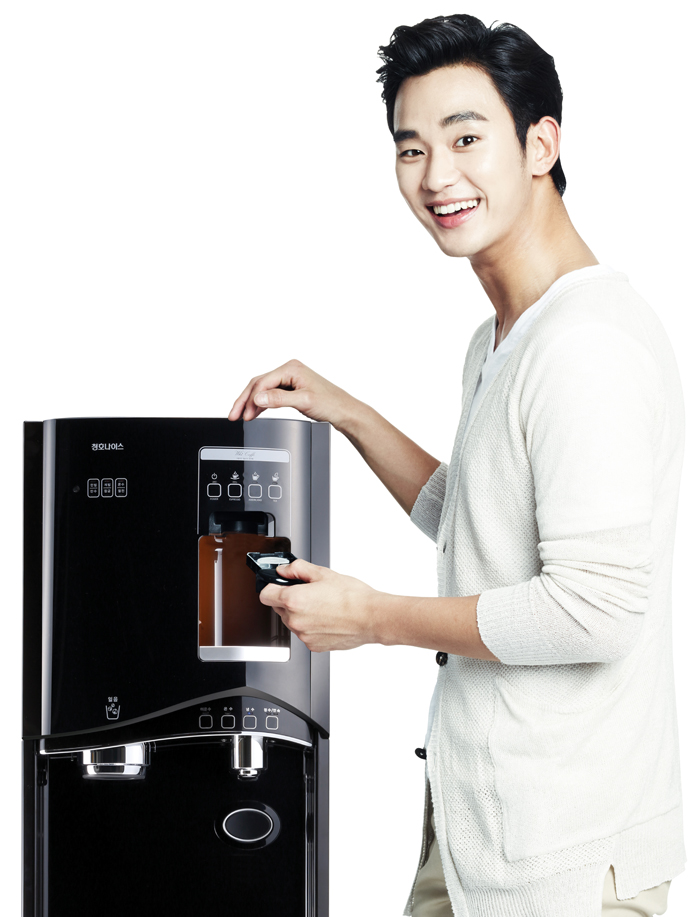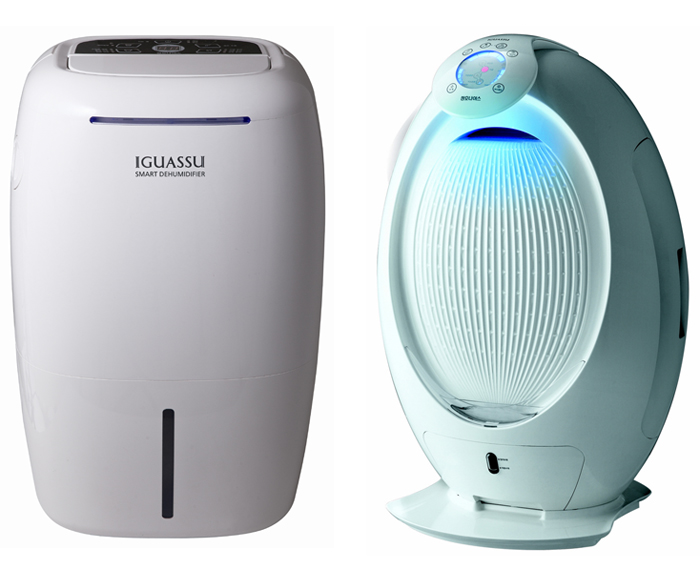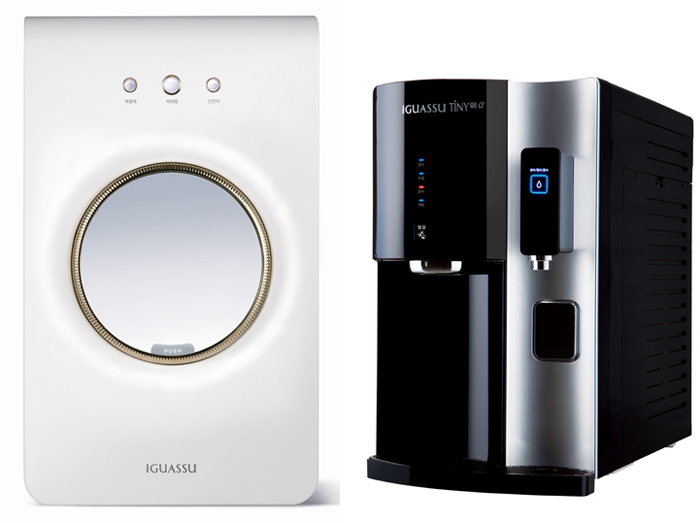Can a water purifier make coffee? Most people would think it impossible, but Chungho Nais' Whi Caffe can do it.
The home appliance can not only purify tap water to produce cold water, hot water and ice, but it can also can make capsule coffee. It can make an espresso, Americano or iced Americano, depending on the user's tastes. The Whi Caffe is the world's first water purifier that can make coffee.
Chungho Nais, founded in 1993, has made its mark by introducing innovative products that people had not thought of before, such as water purifiers that can make ice or that double as a wine cellar. Its latest product is an integration of the 21-year-old company's technology. Its biggest benefit is that it can produce water with an excellent taste.

The taste of coffee largely depends on the type of beans and their origin, as well as the roast and the blend. However, many people are not aware that the water quality greatly influences the taste. "Hard" water often contains a lot of calcium and magnesium and results in a bitter, murky taste in the coffee. Chlorine in water can also reduce the coffee flavor and produce an unpleasant smell. The Whi Caffe uses a reverse osmosis concentration method to eliminate chlorine and minerals, such as magnesium or calcium, and to reduce the bitterness, strengthening the coffee flavor and making the taste milder at the same time. It can also produce ice, meaning that it can also make iced coffee.
"The Whi Caffe is an ambitious product and we spent five years developing it," said Chungho Nais CEO Lee Seok-ho. "We will create new standards in water purifiers and in the coffee market."
Over the past few years, the capsule coffee market has grown a great deal. However, the machines were a bit inconvenient because people had to refill the water and clean the water container. However, the Whi Caffe can automatically cleanse itself, reducing the spread of bacteria, and can continue to provide clean water, making it easier for the consumer. Due to its convenient features, the machine has sold over 1,500 units in the 20 days since it was released on July 1.

Beyond coffee machines, Chungho Nais makes health-related home appliances, such as air purifiers, bidet toilet seats, water softeners and dehumidifiers. The company's line of Iguassu dehumidifiers is what people need during the long, hot and humid summers. Its strong "dehumidification engine" and its anti-virus filter maintain a pleasant environment. It can also dry wet laundry and shoes.
The Iguassu Waterfall Air Purifier-Humidifier is a combination of an air purifier and an indoor water fountain. It removes pollutants and keeps the optimal humidity in the air. The water filter also kills nearly all harmful viruses in the air. Both the hot water and the filtered air get filtered through hot water, producing moisture. Its ultraviolet rays prevent viruses in the moisture, whose particles are so small that they can spread widely.
Chungho Nais' products can be purchased in 30 nations, including the U.S., Japan and Southeast Asia. The company operates a joint venture in China with the China-based Midea Group to manufacture and distribute water purifiers and filters.

Copy By Limb Jae-un
Korea.net Staff Writer
jun2@korea.kr
The home appliance can not only purify tap water to produce cold water, hot water and ice, but it can also can make capsule coffee. It can make an espresso, Americano or iced Americano, depending on the user's tastes. The Whi Caffe is the world's first water purifier that can make coffee.
Chungho Nais, founded in 1993, has made its mark by introducing innovative products that people had not thought of before, such as water purifiers that can make ice or that double as a wine cellar. Its latest product is an integration of the 21-year-old company's technology. Its biggest benefit is that it can produce water with an excellent taste.

Chungho Nais' Whi Caffe is the world's first water purifier that can serve hot water, cold water, ice cubes and capsule coffee.
The taste of coffee largely depends on the type of beans and their origin, as well as the roast and the blend. However, many people are not aware that the water quality greatly influences the taste. "Hard" water often contains a lot of calcium and magnesium and results in a bitter, murky taste in the coffee. Chlorine in water can also reduce the coffee flavor and produce an unpleasant smell. The Whi Caffe uses a reverse osmosis concentration method to eliminate chlorine and minerals, such as magnesium or calcium, and to reduce the bitterness, strengthening the coffee flavor and making the taste milder at the same time. It can also produce ice, meaning that it can also make iced coffee.
"The Whi Caffe is an ambitious product and we spent five years developing it," said Chungho Nais CEO Lee Seok-ho. "We will create new standards in water purifiers and in the coffee market."
Over the past few years, the capsule coffee market has grown a great deal. However, the machines were a bit inconvenient because people had to refill the water and clean the water container. However, the Whi Caffe can automatically cleanse itself, reducing the spread of bacteria, and can continue to provide clean water, making it easier for the consumer. Due to its convenient features, the machine has sold over 1,500 units in the 20 days since it was released on July 1.

Chungho Nais makes the Iguassu Dehumidifier (left) and the Iguassu Waterfall Air Purifier-Humidifier.
Beyond coffee machines, Chungho Nais makes health-related home appliances, such as air purifiers, bidet toilet seats, water softeners and dehumidifiers. The company's line of Iguassu dehumidifiers is what people need during the long, hot and humid summers. Its strong "dehumidification engine" and its anti-virus filter maintain a pleasant environment. It can also dry wet laundry and shoes.
The Iguassu Waterfall Air Purifier-Humidifier is a combination of an air purifier and an indoor water fountain. It removes pollutants and keeps the optimal humidity in the air. The water filter also kills nearly all harmful viruses in the air. Both the hot water and the filtered air get filtered through hot water, producing moisture. Its ultraviolet rays prevent viruses in the moisture, whose particles are so small that they can spread widely.
Chungho Nais' products can be purchased in 30 nations, including the U.S., Japan and Southeast Asia. The company operates a joint venture in China with the China-based Midea Group to manufacture and distribute water purifiers and filters.

Chungho Nais produces the Iguassu Softene water softener (left) and the Iguassu Tiny Mirror ice-making water purifier
Copy By Limb Jae-un
Korea.net Staff Writer
jun2@korea.kr
Comments
Post a Comment